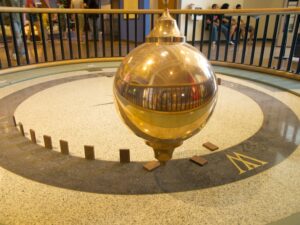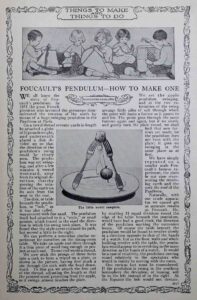 It is a well-known fact that the Earth rotates once every 24 hours. However, it wasn’t always common knowledge. It is thanks to the practical demonstration of Leon Foucault that we know about the Earth’s rotation. In 1851, the French physicist Foucault demonstrated how the planet rotates using his now-famous pendulum, the Foucault Pendulum.
It is a well-known fact that the Earth rotates once every 24 hours. However, it wasn’t always common knowledge. It is thanks to the practical demonstration of Leon Foucault that we know about the Earth’s rotation. In 1851, the French physicist Foucault demonstrated how the planet rotates using his now-famous pendulum, the Foucault Pendulum.
A simple yet brilliant creation, the pendulum uses a suspended lead ball to indicate the rotation of the Earth over the course of a day. The pendulum is surrounded by small pins arranged in a circle, which the pendulum knocks down one by one, eventually completing a full rotation. Foucault first conducted his experiment in the Paris Observatory. It was then replicated in the Panthéon, where it remains an impressive centerpiece for visitors to view to this day.

Most discovery centers, planetariums, and museums have a version of Foucault’s Pendulum on display. However, you can also replicate this experiment at home with the kids using household items! For detailed instructions, visit this Resalvaged article to learn more.